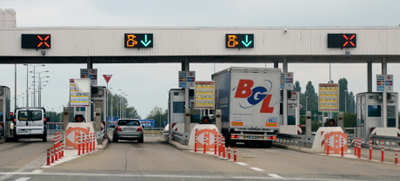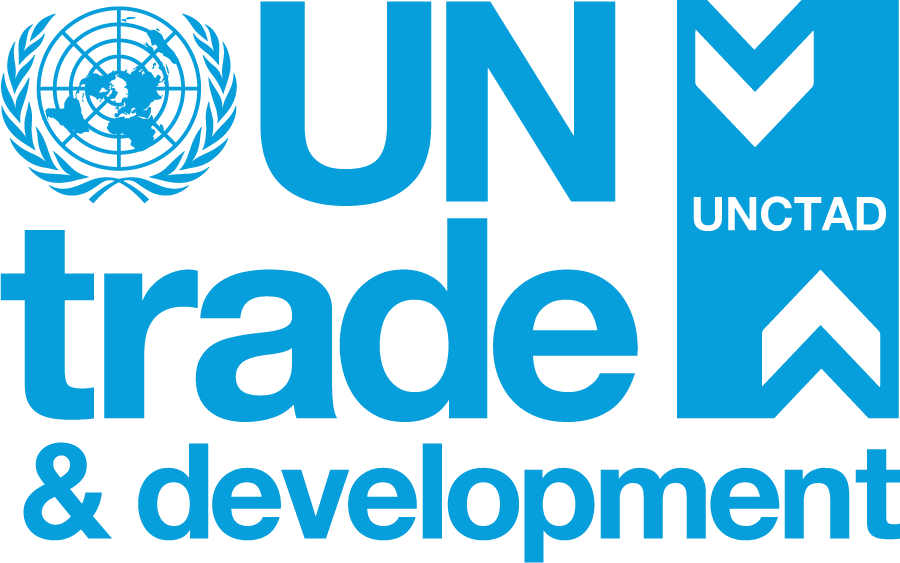Written by Predrag BjelicArticle No. 18 [UNCTAD Transport and Trade Facilitation Newsletter N°78 - Second Quarter 2018]
Due to the declining tariffs, many countries have increasingly resorted to non-tariff measures as instruments to administer trade and, often, to protect domestic markets from imports.
Many non-tariff measures have been identified and are regulated by the General Agreement on Tariffs and Trade (GATT), such as quantitative restrictions; while others, such as such as import licenses; technical barriers to trade, and sanitary and phytosanitary measures are covered by other World Trade Organization (WTO) multilateral agreements.

Today, the buzz term in international trade is trade facilitation. Trade-related administrative and procedural measures can obstruct significantly the efficient flow of goods across national borders. The new WTO Trade Facilitation Agreement (TFA) has been designed to strengthen multilateral provisions with a view to address, within the WTO legal framework, the trade barrier effect of these measures.
The Central European Free Trade Agreement (CEFTA) includes Albania, Bosnia and Herzegovina, Montenegro, the Republic of Moldova, Serbia, the Former Yugoslav Republic (FYR) of Macedonia and Kosovo[1]. In 2006, this agreement was substantially amended to modernize it and it was also enlarged, with six new Parties from South Eastern Europe. Several studies show that the nature of trade barriers obstructing intra-regional trade is different from the barriers affecting trade with the European Union, which is CEFTA’s main trade partner.
1) The perception on Trade Facilitation among CEFTA Parties
A 2004 OECD study analysed non-tariff barriers affecting the CEFTA region and found that the most important non-tariff barriers it faced when exporting to EU were technical barriers to trade. In contrast, when exporting within the CEFTA region the most important barriers related to administrative barriers to trade, namely customs procedures. Therefore, it appears that administrative barriers to trade have the most negative impact on the intra-regional trade. More recent research, conducted by my colleagues and me, confirmed these findings.
Several studies and benchmarks measuring traders’ perceptions on administrative barriers to trade provide an indication on the trade facilitation environment in the CEFTA region. For instance, the World Bank “Trading Across Borders” indicators, suggests that CEFTA Parties are performing better than other economies in transition regarding the time and cost associated with the logistical process of exporting and importing goods. Albania, Serbia and the FYR of Macedonia are the best performers, suggesting that, according to these indicators, traders face less procedural barriers to trade in these economies.
Table 1: Trading Across Borders Indicators for CEFTA Parties in 2017
Economy | Trading Across Borders (Distance to Frontier) | Trading Across Borders rank | Time to export: Border compliance (hours) | Cost to export: Border compliance (USD) | Time to export: Documentary compliance (hours) | Cost to export: Documentary compliance (USD) | Time to import: Border compliance (hours) | Cost to import: Border compliance (USD) | Time to import: Documentary compliance (hours) | Cost to import: Documentary compliance (USD) |
Albania | 96.29 | 24 | 9 | 55 | 6 | 10 | 10 | 77 | 8 | 10 |
Bosnia and Herzegovina | 91.87 | 37 | 5 | 106 | 4 | 92 | 6 | 109 | 8 | 97 |
Montenegro | 88.75 | 44 | 8 | 158 | 5 | 67 | 23 | 306 | 10 | 100 |
Republic of Moldova | 92.32 | 35 | 3 | 76 | 48 | 44 | 4 | 83 | 2 | 41 |
Serbia | 96.64 | 23 | 4 | 47 | 2 | 35 | 4 | 52 | 3 | 35 |
The FYR of Macedonia | 93.87 | 27 | 9 | 103 | 2 | 45 | 8 | 150 | 3 | 50 |
Kosovo1 | 86.87 | 48 | 28 | 105 | 38 | 127 | 16 | 128 | 6 | 42 |
Europe and Central Asia | 83.96 | 58 | 28 | 191.4 | 27.9 | 113.8 | 25.9 | 185.1 | 27.3 | 94.7 |
Source: World Bank, Doing Business 2018 Report, Trading Across Borders Indicators, 2018.
In contrast, according to the Trade facilitation Indicators developed by the Organisation for Economic Cooperation and Development (OECD), CEFTA Parties declined in 2017 in the application of their trade facilitation measures, compared to their 2015 results. The OECD methodology measures and benchmarks performance of border procedures across countries, covering a wide spectrum of customs and other regulatory trade procedures at the border included in the TFA. They cover 133 variables, grouped into 11 policy dimensions including, for example: information availability; consultations; advance rulings; appeal procedures; fees and charges; documentation requirements; automation of border procedures; streamlining of border processes; domestic border agency cooperation; cross-border agency cooperation; governance and impartiality.
2) Trade Facilitation in CEFTA: Moving forward
The CEFTA region has embarked on the ambitious task of eliminating administrative barriers to trade. One important challenge moving forward was that half of the CEFTA Parties are not WTO members so the TFA is not directly applicable to them. In view of this, the region designed a special instrument: the Protocol on Trade Facilitation (CEFTA Additional Protocol 5).
As a result of obligations under this Protocol, CEFTA Parties undertook a self-assessment of the present implementation status of certain trade facilitation measures between 2015 and 2016. The outcome of this self-assessment was that Parties fully comply with 60% of TFA Agreements provisions; they substantially comply with 18% of them and partially comply with 14% of them. Most CEFTA Parties are very advanced in application of most trade facilitation measures, except Bosnia and Herzegovina. However, the majority of CEFTA Parties do not use single windows.
Table 2: Categorization of selected TFA measures* in CEFTA
| Albania | Bosnia and Herzegovina | Montenegro | Serbia | The FYR of Macedonia | Kosovo1 |
Advance Rulings | B | C | A | B | A | C |
Pre-Arrival Processing | B | C | C | B | A | B |
Post Clearance Audit | A | C | B | B | A | B |
Authorized Economic Operators | B | C | A | A | A | B |
Single Window | C | C | C | C | A | C |
Source: TF Self-assessment by CEFTA Parties, 2015-2016, According to: Predrag Bjelic, “Trade Facilitation and Non-Tariff Measures in Beverages and Auto-Parts Supply Chains in CEFTA — Regional Analysis and Policy Recommendations”, GIZ, June 2016, p. 67.
* Note: The TFA foresees the categorization of trade facilitation measures in three categories (A, B and C) that are related to the implementation capacity of each country. Including a measure in Category A means that the Member has to capacity to implement it immediately (once TFA enters into force). Including a measure in Category B means that the Member needs additional time (a transitional period, following the entry into force of the agreement) to be able to implement it. Including a measure in Category C means that, in addition to time, the Member needs assistance and support for capacity building to be able to implement it.
The CEFTA Additional Protocol 5 goes beyond TFA commitments, encompassing advancements with respect to mutual recognition of trade documents and procedures and further alignment of the CEFTA region with EU trade procedures. Therefore, once applied it is expected to significantly reduce administrative barriers to trade in CEFTA. Some on-going projects[2] seek to eliminate non-tariff barriers and facilitate trade in CEFTA, following a sectoral approach. They are focusing on selected supply chains such as beverages (beer and wine); auto parts[3]; vegetables and metals (steel). Studies have found that concerns from the private sector in these sectors were closely related to delays in clearance and release of goods as well as to transparency, lack of consultations and time to adapt to new laws and regulations.
The author, Dr. Predrag Bjelic, is Professor of International trade; Head of the International Economics Department at the Belgrade Faculty of Economics, and Academic Coordinator for UNCTAD courses on Key Issues on the International Economic Agenda (paragraph 166 courses) for Economies in Transition.
For additional information contact: bjelic@ekof.bg.ac.rs
[1] Kosovo (United Nations Administrative Region, Security Council resolution 1244 (1999)).
[2] Financed by the EU and the German government and implemented by Deutsche Gesellschaft für Internationale Zusammenarbeit (GIZ) GmbH
[3] UNCTAD provided support to projects related to the beverage and the auto-parts sectors



